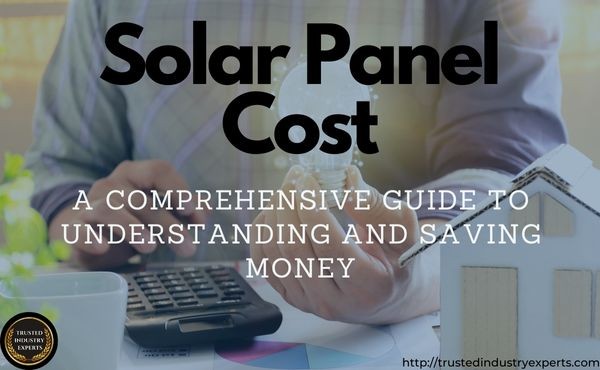
Solar Panel Cost: A Comprehensive Guide to Understanding and Saving Money
As more and more people become interested in adopting solar panels for their homes and businesses, the question of cost is often at the forefront of their minds. In this article, we will provide a comprehensive guide to understanding solar panel cost and offer practical tips for saving money on solar installations.
The Cost of Solar Panels
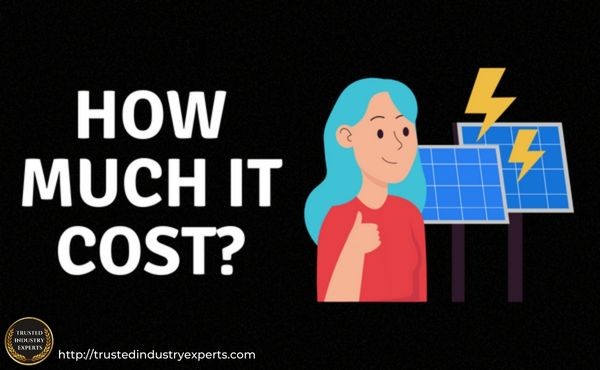
The cost of solar panels can vary depending on a variety of factors, including the size of the system, the type of panel, and the location of the installation. On average, a residential solar energy system can cost anywhere from $15,000 to $25,000, with larger systems costing more.
It’s important to note that the upfront cost of solar panels can be a significant investment, but it can also lead to significant long-term savings on energy bills. In fact, the average homeowner can save up to $30,000 over the lifetime of their solar energy system.
Factors That Influence Solar Panel Cost
There are several factors that can influence the cost of solar panels, including:
1. System Size
The size of the solar energy system is one of the primary factors that can influence the cost. Larger systems can generate more energy and are therefore more expensive.
How The Size of Your Solar Panel System Influences the Cost and Performance
Are you a homeowner interested in harnessing the power of the sun? With solar power becoming increasingly popular among homeowners looking to reduce their dependence on fossil fuels and save money on electricity bills, it’s important to understand the factors that influence the cost of solar energy systems. One of the most crucial factors to consider is the size of the solar energy system. This educational blog post will cover how the size of a solar energy system directly affects the installation costs and overall performance, providing you with valuable insights to help you make informed decisions about your solar energy investment.
1. Understanding Solar Panel System Sizes and Output
Before delving into the cost and performance, it is essential to understand what constitutes the size of a solar energy system. The size generally refers to the overall energy production capacity of the system, measured in kilowatts (kW). The larger the system, the more solar panels are required, and the higher the energy production. Depending on factors such as roof size, orientation, and shading, as well as local energy needs and financial constraints, solar energy systems can be sized to meet various demands.
2. Larger Systems Provide Higher Energy Output
It may seem evident, but it’s worth mentioning that larger solar will produce more energy. This directly impacts your energy savings and the return on your solar investment. Simply put, the more energy your solar can generate, the less electricity you’ll need to purchase from your utility company. As a result, you stand to see a more significant reduction in your monthly electricity bills.
3. Sizing Your System to Meet Your Energy Needs
When deciding on the right size of a solar for your home, you should consider your average monthly electricity consumption, as well as the amount of sun exposure available at your location. You can work with a solar installer to analyze your energy bills and your site’s solar potential to calculate the most cost-effective system size that meets your energy requirements. Keep in mind that installing a system which is too large will result in unnecessary costs and may take longer to recoup your investment.
4. Costs Associated with Larger Solar Systems
It is no surprise that larger solar systems come with higher initial costs. The price not only depends on the number of solar panels but also on factors like size and quality of the panels, inverters, mounting equipment, wiring, and installation. Typically, the installation costs decrease slightly as the system size increases, due to economies of scale. However, the overall price will still rise as the system size enlarges – you should carefully weigh the benefits of higher energy production against the associated costs when choosing a solar.
5. Incentives, Rebates, and Financing Options
To help mitigate installation costs, various federal and state incentives, as well as local rebates, are available for homeowners who install solar panel systems. Depending on your location, you could be eligible for tax credits or deductions, as well as other rebate programs. Larger systems usually yield larger incentives, therefore, reducing the net cost of your solar system. Additionally, financing options such as solar loans and leases can further help manage the costs of installing a larger solar system.
In summary, the size of a solar panel system has a significant impact on its overall cost and performance. To harness the maximum benefits of solar energy, it’s essential to consider your energy needs, site conditions, financial constraints, and available incentives when determining the appropriate size of your solar panel system. Being informed about these factors will ensure that you make the best decision for your home and pave the way for a greener, more sustainable future.
2. Panel Type
The type of solar panel used can also influence the cost. There are two primary types of solar panels: monocrystalline and polycrystalline. Monocrystalline panels are generally more expensive but can be more efficient in converting sunlight into electricity.
Monocrystalline vs Polycrystalline: Which Solar Panel Type is Right for You?
Solar panels have been a trending topic in recent years, providing homeowners with ways to save money on their electric bills and reduce their carbon footprints. As interest in solar energy continues to grow, understanding the different types of solar panels and which one is best for your needs is essential. This article will compare monocrystalline and polycrystalline solar panels, discussing the pros, cons, and costs of each type to help you make an informed decision as you explore the world of solar energy.
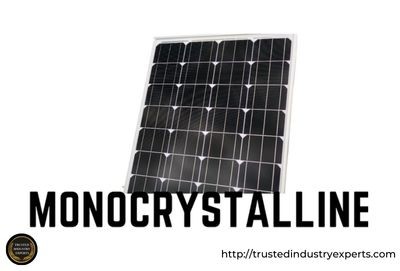
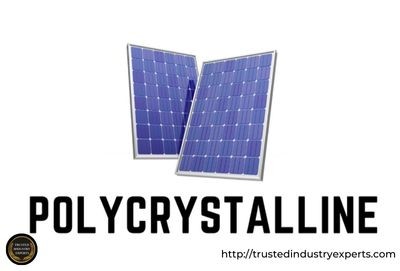
1. A Brief Overview of Monocrystalline and Polycrystalline Solar Panels
Before divin
g into the specifics, it’s essential to understand the difference between these two types of solar panels. Monocrystalline panels are created from a single crystal structure, which offers a uniform appearance and high efficiency. Polycrystalline panels consist of multiple crystals, giving them a more fragmented appearance and slightly lower efficiency. These differences in materials and production methods directly impact the overall cost of solar installations and your monthly savings on utility bills.
2. Comparing Efficiency and Energy Production
When it comes to converting sunlight into electricity, monocrystalline panels have the edge. They are typically 15-20% more efficient, which means they can generate more electricity using the same amount of space. This high efficiency is particularly beneficial for homeowners with limited roof space or those looking to offset a significant portion of their energy usage. However, polycrystalline panels can still provide substantial energy production, and their slightly lower efficiency may not be a deal breaker for those with ample space or lower energy demands.
3. Installation Costs and Payback Period
The type of solar panel you choose can also play a significant part in your installation costs. Monocrystalline panels are generally more expensive, both in terms of materials and labor. However, the higher efficiency of monocrystalline panels means that you will likely see more significant savings on your utility bills, effectively shortening the payback period for your investment. On the other hand, polycrystalline panels offer a lower upfront cost that may be more appealing to homeowners with a tighter budget.
4. Considering Incentives and Net Metering
Aside from the initial installation costs, various factors can influence the overall value of your solar investment. The federal solar tax credit is a program that currently allows homeowners to claim a credit for 26% of their how much solar panel costs. This incentive can significantly reduce the cost of both monocrystalline and polycrystalline panels, though the savings may be more noticeable for the more expensive monocrystalline options.
Additionally, net metering policies allow homeowners to sell any excess energy generated by their solar panels back to the grid, effectively lowering their energy costs even further. The type of solar panel you choose could have an impact on net metering compensation, as higher efficiency panels may generate more surplus electricity.
5. Assessing Your Needs and Priorities
When choosing between monocrystalline and polycrystalline panels, it’s essential to consider your specific needs and priorities. If efficiency and space-saving capabilities are paramount, monocrystalline panels may be the best choice. However, if lower costs and a quicker return on investment are your primary concerns, polycrystalline panels may provide excellent value. In either case, it’s crucial to partner with a reputable solar installation company who can guide you through the process and provide tailored recommendations based on your unique situation.
The decision between monocrystalline and polycrystalline solar panels ultimately comes down to your individual needs, budget, and long-term energy goals. While monocrystalline panels may offer higher efficiency and increased energy production, polycrystalline panels provide a more cost-effective option for those looking to save on upfront costs. Understanding the benefits of each type of solar panel and considering your unique circumstances will empower you to make an informed decision and maximize the value of your solar investment.
3. Location
The location of the solar panel installation can also influence the cost. Factors such as the availability of sunlight, local energy costs, and local incentives can all impact the overall cost of the installation.
How Location Influences the Cost of Solar Panel Installation
As more homeowners turn to solar energy as a sustainable and environmentally friendly alternative, understanding the different factors that impact the cost of solar panel installation costs becomes crucial. One such crucial factor is the location of the installation. In this blog post, we delve into the multiple aspects such as sunlight availability, local energy costs, and local incentives that can influence the overall cost of solar panels installation. By understanding these factors, homeowners can make an informed decision while considering solar energy for their homes.
1. Availability of Sunlight:
The most basic requirement for how many solar panels to work efficiently is sunlight. The location of your home plays a significant role in determining the amount of sunlight the solar panels will receive. In general, areas that receive more sunlight hours throughout the year will produce more energy, therefore lowering the overall cost of the installation. It is essential to consider the angle of your roof and its direction as well. South-facing roofs tend to receive more sunlight, making them ideal for how many solar panels installations. Additionally, shading from nearby trees, buildings or other physical obstacles can impact the amount of sunlight your solar panels receive, directly influencing the solar panel cost of the installation.
2. Local Energy Costs:
The cost of electricity in your area is another vital factor that affects the overall cost of solar panel installation. In regions with higher electricity rates, the savings from installing solar panels will be more significant, making the installation cost more worthwhile. Understanding how much power your household consumes and comparing it to the state average cost will help you identify the potential savings from your solar panels. Furthermore, knowing about the local electricity rate structure, such as time-of-use rates, can help you maximize your solar panels production and optimize energy usage during peak hours.
3. Local Incentives and Tax Breaks:
Federal, state, and local incentives can significantly lower the cost of solar panel installations. The federal solar tax credit, also known as the investment tax credit (ITC), allows homeowners to deduct a percentage of the installation cost from their federal taxes. In addition to the ITC, several states and local governments offer additional incentives, grants, and rebates to encourage the adoption of solar energy. Property assessed clean energy (PACE) programs are also available in some areas, allowing homeowners to finance solar installations through property taxes. Thorough research on what incentives are available in your area can considerably reduce your solar panel costs.
4. Solar Batteries and Storage:
Electricity generated by solar panels can be stored in solar batteries, allowing homeowners to use the stored energy during periods of low sunlight or during a power outage. However, the inclusion of solar batteries in the solar system can increase the overall installation cost. Deciding whether to incorporate a solar battery largely depends on your typical electricity consumption, local energy costs, and available incentives for energy storage. If your local electricity rates are significantly higher during peak hours, incorporating a solar battery might be more cost-effective.
5. Financing Options:
The way you choose to pay for the solar system can also impact the overall cost. Buying the solar system outright is usually the most cost-effective option, but it may not be feasible for all homeowners. Other options such as solar loans, leases or power purchase agreements (PPAs) can make the switch to solar more affordable. These financing options allow homeowners to repay the cost of the installation over time, but they may come with added fees or higher electricity rates. It is crucial to research and compare these alternatives to determine which one best aligns with your financial situation.
Considering the location’s impact on solar panel installation cost is crucial for homeowners looking to make the shift to renewable energy. By taking into account the amount of sunlight received and its effect on energy production, understanding local energy costs, assessing local incentives and tax breaks, contemplating the need for solar batteries, and evaluating financing options, homeowners can make well-informed decisions. Installing solar panels is ultimately an investment in both your property and the environment; therefore, thoroughly researching and considering your options will result in a more efficient and cost-effective solution.
4. Installation Costs
The cost of installation can also vary depending on the complexity of the installation and the qualifications of the installer. It’s important to work with a reputable installer who can provide a detailed cost breakdown for the project.
Understanding Solar Installation Costs: Factors, Savings, and Incentives
The decision to invest in solar energy is a bright one for homeowners, considering the long-term benefits and savings it presents. However, the cost of solar panel installation can be daunting, with the solar market’s fluctuation and the wide array of options available. It’s crucial to understand the factors that contribute to solar panel costs, the potential energy savings, and incentives available to make an informed decision. In this blog post, we’ll discuss solar panels save, the complexity of installations, the qualifications of a solar installer, and additional insights to help you navigate this renewable energy venture.
1. Factors influencing solar installation costs
Solar installation cost can vary from home-to-home, primarily due to several contributing factors. The cost of solar panels and materials, the size of the system, your location and local regulations, your home’s energy consumption, and any necessary structural modifications all influence the cost of installation. A detailed breakdown of these factors by a reputable solar installer can help you understand the specific costs associated with your solar project.
2. The importance of a qualified solar installer
The quality and expertise of your solar installer are essential in ensuring the success of your solar energy project. Inexperienced or unqualified installers can create more issues than they solve, potentially leading to additional costs down the line due to repairs or premature system failures. It’s crucial to work with a reputable installer who can provide a detailed cost breakdown for the project, outline any potential complexities and challenges, and answer any questions you may have throughout the process.
3. Energy savings with solar installation
One of the primary selling points of solar energy is the potential for significant energy savings over time. A well-installed solar system can reduce or eliminate your reliance on grid electricity, leading to substantial savings on monthly electricity bills. These savings often outweigh the initial investment in solar installation, and the system can even pay for itself within a reasonable timeframe, typically between 5 and 10 years, depending on your energy consumption and location.
4. Solar incentives and tax credits
In many cases, local, state, and federal governments offer solar incentives such as tax credits, rebates, and grants to ease the financial burden of solar installation. These incentives can further reduce the cost of your investment, making solar power more accessible and attractive. Researching and applying for available tax incentives in your area can help you save even more money on your solar energy journey.
5. The decline in solar prices
The cost of solar panels and accessories has seen a considerable decline in recent years, making solar power more affordable for homeowners. This trend is expected to continue as technologies advance and materials become more readily available. As a result, the overall cost of solar installation is anticipated to decrease, making solar power an even more viable option for homeowners seeking to reduce energy costs and environmental impact.
Solar panel installation is an investment with long-lasting benefits for homeowners, both financially and environmentally. Understanding the solar panels cost, the importance of a qualified solar panels outright, and available incentives can help you make an informed decision around your solar energy venture. Some factors, such as energy savings and the decline in solar prices, contribute to the overall affordability of solar energy solutions. Be sure to work with a reputable installer who can provide a detailed cost breakdown to ensure your solar investment remains a shining beacon of how much energy for years to come.
How to Save Money on Solar Panel Installations
While the upfront cost of solar panels can be significant, there are several ways to save money on solar installations, including:
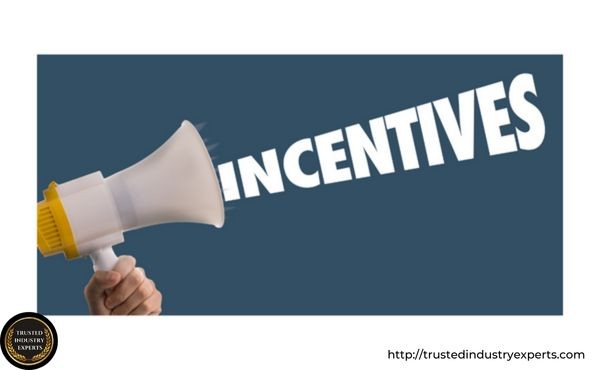
1. Take Advantage of Incentives
There are several federal and state incentives available for homeowners and businesses that install solar panels. These incentives can include tax credits, rebates, and other financial incentives that can significantly reduce the overall cost of the installation.
Solar Incentives: The Financial Perks for Homeowners and Businesses
The sun provides an abundant and sustainable source of energy to power our daily lives. With solar panels becoming increasingly efficient and affordable, many homeowners and businesses have taken advantage of the savings on electricity costs and the reduced carbon footprint by installing solar panels. The good news doesn’t stop there – federal and state governments have also implemented various incentives to support the switch to solar. These incentives include solar tax credits, rebates, and other financial benefits that can significantly reduce the overall labor costs. In this blog post, we’ll shed light on the many financial incentives available, and explore the different ways these can help you save money while helping the environment.

1. Solar Investment Tax Credit (ITC):
Perhaps the most well-known solar incentive is the Solar Investment Tax Credit (ITC), a federal tax credit that covers a percentage of the costs of installing a residential solar power system. Initially enacted in 2006, the ITC offers a dollar-for-dollar reduction in federal income taxes for both residential and commercial install solar panels . As of 2021, the ITC stands at 26%, but it is set to decrease to 22% in 2023 and 10% for commercial installations from 2024 onwards. Homeowners and businesses can claim this tax incentives by completing IRS Form 5695 and submitting it with their annual tax return.
2. State and Local Solar Incentives:
In addition to the federal ITC, many states, cities, and utility companies offer their own solar incentive, such as tax incentives, rebates, and other financial perks. These incentives vary by location and can change over time. Examples include property tax exemptions, sales tax exemptions, and solar renewable energy certificates (SRECs). Researching and taking advantage of these regional incentives can compound the benefits of going solar and further reduce your solar panels cost.
3. Solar Loans and Financing:
For homeowners and businesses that may struggle with the upfront costs of installing a solar power system, solar loan and financing options can offer a lifeline. Many solar companies partner with financial institutions to offer solar loan with various repayment terms and interest rates. These loans can usually cover the entire costs of purchasing and installing the solar panels, allowing you to pay off the loan gradually with the savings from your lower electricity bills.
4. Solar Leases and Power Purchase Agreements (PPAs):
Another way to enjoy the benefits of solar energy without the upfront costs is through solar leases and power purchase agreements (PPAs). In both cases, a third-party company will install, own, and maintain the solar system on your property while you pay a fixed monthly fee. In a solar lease, this payment remains constant, while in a PPA, you pay for the actual amount of energy the solar panels produce at a predetermined rate. Both options allow you to save on electricity bills immediately without the burden of owning the solar system.
5. Net Metering and Excess Solar Energy:
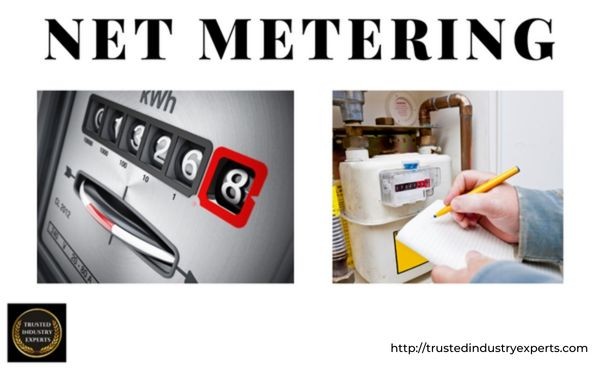
Net metering is a policy that allows homeowners and businesses with solar energy industries association to receive credit for any excess solar energy that they generate and feed back into the grid. The credit is then applied against their electricity bills, effectively reducing or even eliminating monthly electricity costs. Net metering policies and compensation rates vary from state to state and among utility companies, making it crucial to understand the specific policies relevant to your area.
Installing a solar power system for your home or business is already an investment with significant long-term savings on electricity costs and environmental benefits. However, with the many federal and state incentives, such as the ITC, local solar incentives, loan, solar leases, and net metering policies, the cost of going solar can be dramatically reduced even further. By taking advantage of these solar incentive, you can get closer to achieving energy independence, reducing your carbon footprint, and enjoying financial savings that will continue to pay off for years to come. Make sure to fully research the incentives available in your area and work with a reputable solar company to maximize your savings in the adoption of solar energy.
2. Consider a Power Purchase Agreement (PPA)
A Power Purchase Agreement (PPA) is an agreement between the homeowner or business and a third-party solar company. Under a PPA, the solar company installs and owns the solar panel system and the homeowner or business agrees to purchase the energy generated by the system at a fixed rate.
3. Choose a Reputable Installer
Choosing a reputable installer is critical to ensuring a high-quality installation that will provide long-term savings. Be sure to research and compare installers in your area, read reviews, and check references before making a decision.
4. Optimize Your System Size
By optimizing the size of your solar panel system, you can maximize energy generation while minimizing the overall cost. Be sure to work with an installer who can provide a detailed analysis of your energy needs and recommend a system size that is right for your home or business.
Understanding the cost of solar panels is critical to making an informed decision about whether to invest in solar energy. While the upfront cost can be significant, the long-term savings can make solar panels works smart financial choice. By considering the factors that influence cost and taking advantage of incentives and other cost-saving measures, homeowners and businesses can enjoy the benefits of clean, renewable energy and significant energy cost savings.



